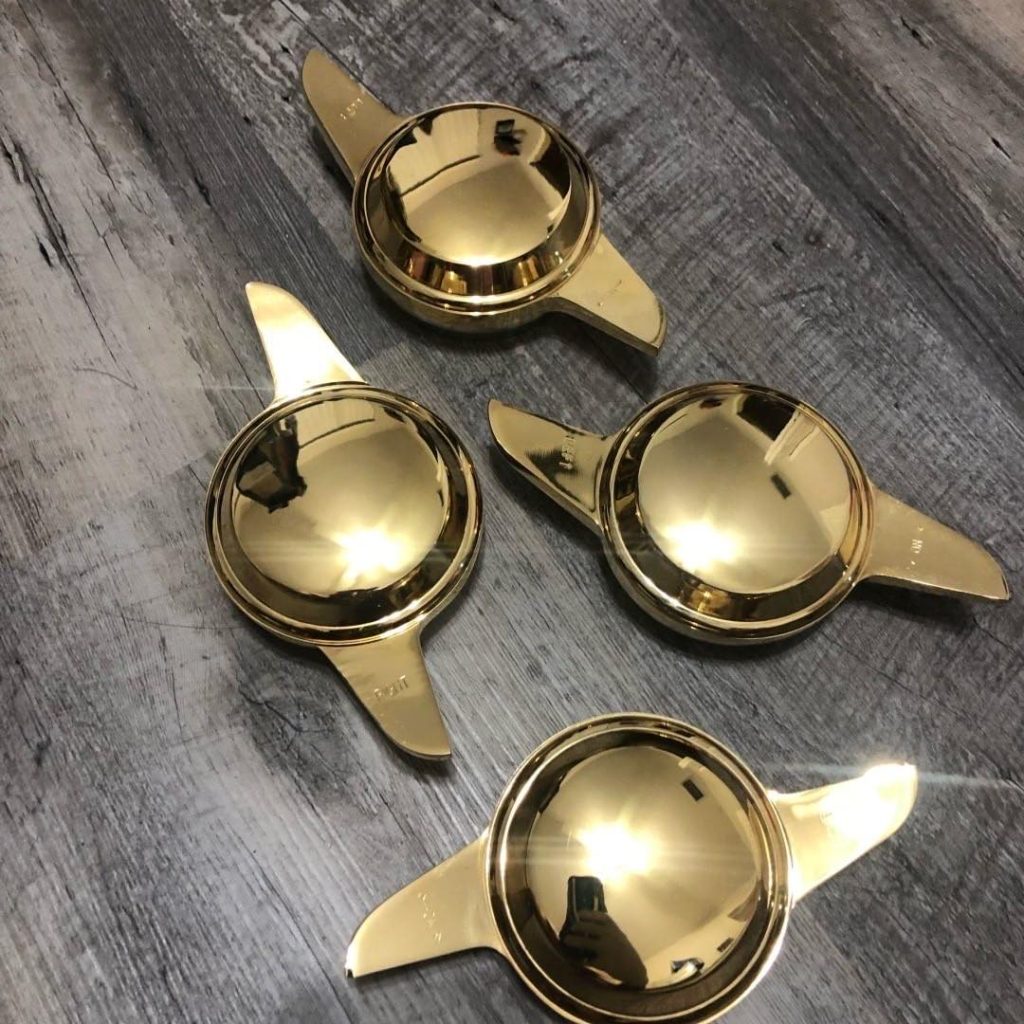

Gold Plating (24 karat)
Gold plating is a process in which we deposit a very thin layer of gold on the surface of another metal predominantly by chemical or electro-chemical plating. It is evident that gold is generally one of the protective metals of choice due to its higher standard electrode potential [Ref] compared to other metals like palladium, silver, copper, tin, nickel etc. This makes it the most noble metal for plating with the highest corrosion resistance. Moreover, they are inert and quite resistant to oxidation. Due to its scarcity and higher cost, gold is often sparingly applied. They can be plated directly on a base metal or gold can be applied over an undercoating such as nickel to improve adhesion of the gold itself.
Gold plating serves various purposes, including enhancing conductivity, providing decoration, offering corrosion protection, and increasing reflectivity. In addition, gold is often used for conductivity instead of silver because it is a cleaner tarnish free surface. It is also impervious to certain chemicals making it the preferred choice with respect to corrosion protection under special applications. We are experienced in plating decorative artworks and Industrial part. Hence, we are the perfect choice for high quality gold plating works.
We offer gold plating services in a range of thicknesses, starting at 0.000007″, which is commonly used for costume jewelry. Furthermore, we have a thickness limit of 0.0002″. For specific applications, a commonly utilized thickness falls within the range of 0.00002″ to 0.00003″. Our gold is specially alloyed with cobalt and nickel, resulting in a hard gold composition. It is worth mentioning that our Dubai branch is extensively dedicated to providing exceptional plating services.
Standard Specification No:
ASTM: B 253 – 17 Aluminium Surface Preparation
ASTM: B 727 – 14 Preparation of Plastics Materials for Electroplating
and ASTM: B 488 – 18 Electro-deposited Coatings of Gold
- High corrosion & tarnish resistance
- Wear resistance (fretting)
- High conductivity
- Low and stable contact resistance
- Bondable
- Solderable
- Semiconductors
- Printed/Etched circuits
- Contacts/Connectors
- Ceramic
- Glass
- Plastic
- Refractory Metals
Frequently Asked Questions
Q: What is gold plating?
A: Gold plating is a process of depositing a thin layer of gold onto the surface of another metal, usually through electroplating. It is done to enhance the appearance of the object, providing a gold-like finish.
Q: Is it expensive to gold plate?
A: The cost of gold plating depends on several factors, including the size of the object, the type and thickness of the gold layer desired, and the complexity of the process. Gold plating can range from affordable options to more expensive ones, depending on these factors.
Q: Does gold plating last long?
A: The longevity of gold plating varies depending on the thickness of the gold layer, the quality of the plating process, and the wear and tear the object is subjected to. With proper care and maintenance, gold plating can last for several years. However, it may require periodic touch-ups to maintain its appearance.
Q: What does 22K gold plating mean?
A: 22K gold plating refers to a gold plating process where the gold layer deposited onto the object consists of 22 karat gold. The “K” represents the purity of the gold, with 24K being the highest purity level. 22K gold plating provides a rich and vibrant gold color to the object.
Please contact us here for any type of Gold plating orders.
